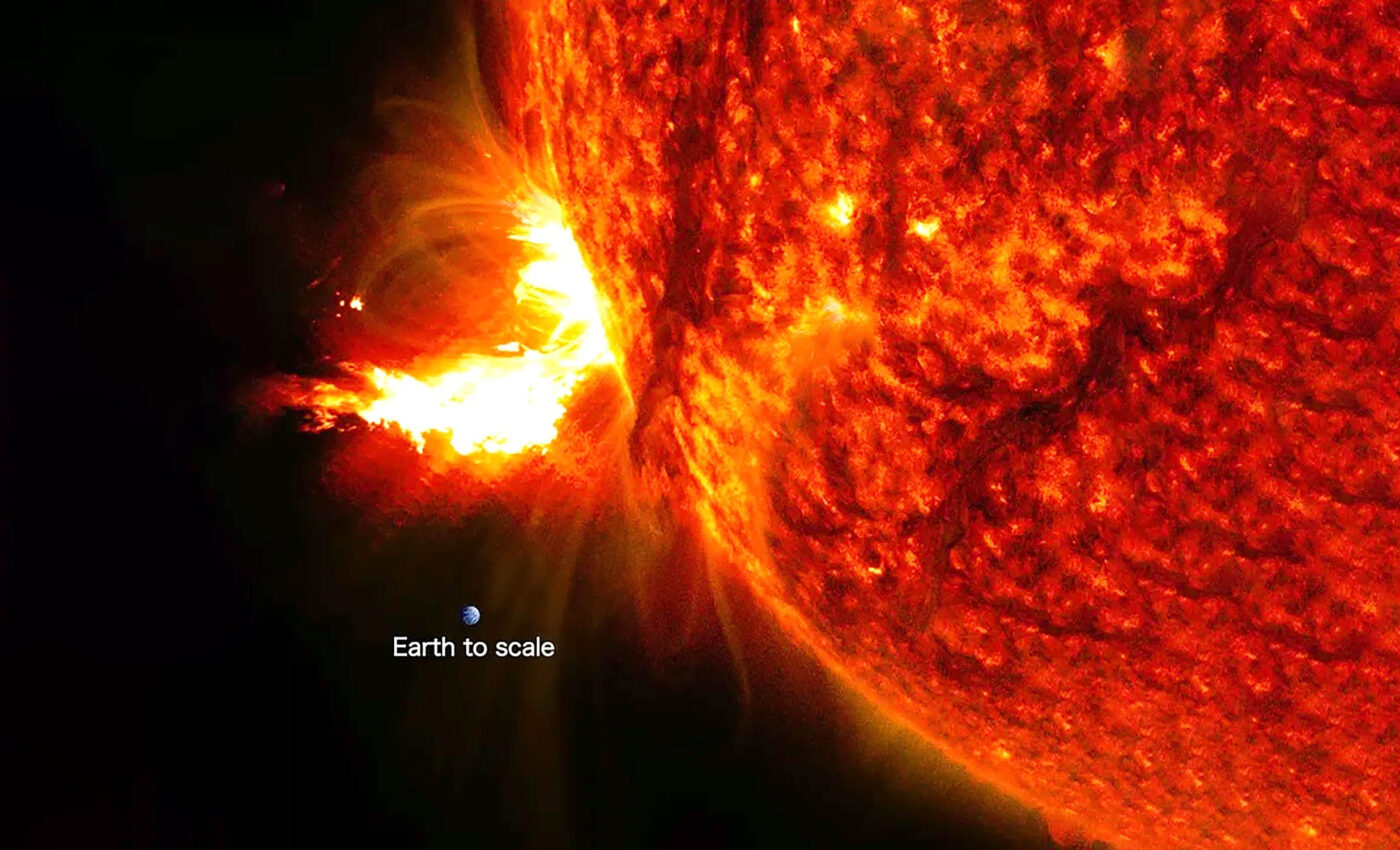
Solar fury: NASA captures X-class flare, Earth braces for impact
On May 27, 2024, at 3:08 a.m. Eastern Time, NASA’s Solar Dynamics Observatory captured a powerful solar flare erupting from the Sun.
The flare, classified as an X2.8, marks one of the most intense solar events in recent years, prompting scientists to closely monitor its potential impact on Earth.
The solar flare was observed by NASA’s Solar Dynamics Observatory (SDO), a spacecraft dedicated to studying the Sun’s activity.
Solar flares of this magnitude can have significant effects on our planet, including disruptions to radio communications, power grids, and navigation systems.
Understanding solar flares
Solar flares are massive bursts of energy that erupt from the Sun’s surface.
These phenomena occur when the magnetic fields in the Sun’s atmosphere become tangled and release their stored energy in a sudden, explosive manner.
The resulting flare can send radiation and charged particles hurtling towards Earth at mind-boggling speeds.
The solar flare that occurred on May 27 was classified as an X2.8 flare, putting it in the most intense category of solar flares, earning an “X-class” designation.
The X-class designation is reserved for the strongest flares, and the accompanying number provides further information about its strength. In this case, the 2.8 rating indicates an extremely powerful event.
Potential impacts on Earth
Solar flares and their associated eruptions can have significant impacts on our planet. They can disrupt radio communications, cause fluctuations in electric power grids, and interfere with navigation signals.
Moreover, these events pose risks to spacecraft and astronauts in orbit, as the intense radiation can damage electronic components and pose health hazards.
Solar activity in the past 24 hours
Over the past 24 hours, solar activity decreased to low levels. However, multiple C-class flares were observed originating from Regions 3691 and 3697.
The largest of these was a C8.9 flare at 7:16 p.m. UTC on May 27, which emerged from Region 3961. This region exhibited slight growth and possible separation of its leader spots.
Region 3693 also showed some growth, while the newly numbered Region 3967 was too close to the limb for accurate classification.
Solar activity forecast: What lies ahead
Looking ahead, solar activity is expected to remain at moderate to high levels over the next few days.
Occasional M-class flares are likely, which could cause minor to moderate radio blackouts.
There is also a chance for isolated X-class flares, potentially leading to strong radio blackouts, particularly through May 30.
Energetic particle activity is mixed
The past 24 hours saw normal to moderate levels of electron flux above 2 MeV, while the proton flux above 10 MeV remained at background values.
The forecast suggests that electron flux will remain at similar levels through May 30.
However, there is a slight chance of a proton event exceeding the S1 (Minor) threshold between May 28 and May 30, due to the flare potential of Regions 3691 and 3697.
Solar wind conditions
Solar wind parameters were generally at or near nominal levels over the past day. Wind speeds ranged from 331 to 389 kilometers per second, while the total magnetic field strength varied between 1 and 7 nanoTesla.
The Bz component, which plays a crucial role in determining the level of interaction with Earth’s magnetic field, fluctuated between +5 and -4 nanoTesla.
The solar wind conditions are expected to remain near nominal levels through May 28. However, an enhancement may arrive in the late hours of May 29 due to the indirect shock from the X2.8 flare event.
As we move into May 30, the solar wind environment is likely to return to ambient-like levels.
Geomagnetic field activity
Over the past 24 hours, the geomagnetic field remained at quiet to unsettled levels. The forecast indicates that these conditions will persist through May 28.
However, isolated active levels, with a chance of minor (G1) storming, may occur if the shock from the May 27 coronal mass ejection (CME) arrives. As any lingering shock effects subside, quiet to unsettled conditions are expected to prevail on May 30.
Staying Informed
To stay updated on how space weather may affect Earth, it is highly recommended to visit NOAA’s Space Weather Prediction Center at https://spaceweather.gov/.
This website serves as the U.S. government’s official source for space weather forecasts, watches, warnings, and alerts. By staying informed, we can better prepare for and mitigate the potential impacts of solar flares and other space weather events.
NASA’s vital role in space weather research
As a research arm of the nation’s space weather effort, NASA plays a crucial role in advancing our understanding of the Sun and its effects on Earth.
The agency operates a fleet of spacecraft that constantly observe the Sun’s activity, its atmosphere, and the particles and magnetic fields in the space surrounding our planet.
Through these observations and the tireless work of scientists, we continue to unravel the mysteries of our star and develop better ways to predict and prepare for space weather events.
The X2.8 solar flare captured by NASA’s Solar Dynamics Observatory serves as a stark reminder of the incredible power and unpredictability of our Sun.
As we continue to monitor its activity and study its impacts on Earth, it is essential that we remain vigilant and prepared for the potential consequences of these awe-inspiring cosmic events.
—–
Like what you read? Subscribe to our newsletter for engaging articles, exclusive content, and the latest updates.
Check us out on EarthSnap, a free app brought to you by Eric Ralls and Earth.com.
—–













